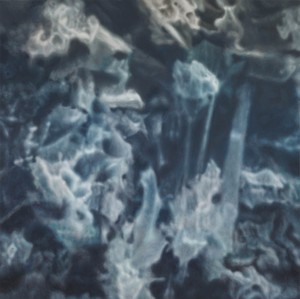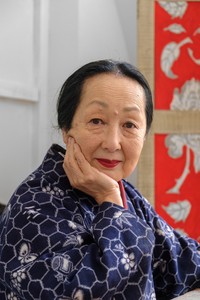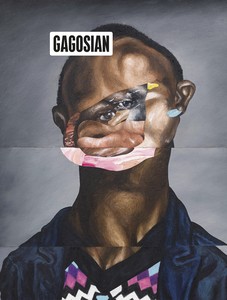
Now available
Gagosian Quarterly Fall 2022
The Fall 2022 issue of Gagosian Quarterly is now available, featuring Jordan Wolfson’s House with Face (2017) on its cover.
To touch and shape earth is a way to live with nature.
—Setsuko
Gagosian is pleased to announce Into the Trees II, an exhibition of new sculptures by Setsuko in ceramic, bronze, and wood, inspired by the richness of the natural world. Also on view are paintings from throughout her career and a selection of new works on paper.
The exhibition furthers the body of work presented in Into the Trees, Setsuko’s 2019 exhibition at Gagosian Paris. It also marks her return to Rome, where she lived for fifteen years at the Villa Medici with her husband, Balthus, during his tenure as director of the Académie de France à Rome, before the couple moved to the Grand Chalet of Rossinière, Switzerland, in 1977. It was there, too, that she first met Benoît Astier de Villatte, who also resided at the Villa Medici as a child. Now Setsuko works in Astier de Villatte’s workshop in Paris, where she produces her own artwork and collaborates with the renowned studio on ceramic collections as well. Moreover, Into the Trees II is the first time that Setsuko’s work has been presented in Rome since 1979, the date of her first solo exhibition at Galleria Il Gabbiano.
Made of terra-cotta that she glazes in a milky white enamel, Setsuko’s ceramic sculptures of oak, magnolia, rose, lemon, quince, pomegranate, and fig trees, and grapevines emphasize the rooted solidity of their trunks and the gnarled texture of their bark. They also incorporate delicately modeled representations of foliage, flowers, acorns, and fruits. Their imposing forms and delicate surfaces convey strength developed over years of survival as well as emergent new growth, with vital structures that communicate the artist’s lifelong observation of nature. These works are reminiscent of Japanese ceramics dating back to Jōmon earthenware (c. 10,500–300 BCE), while also drawing inspiration from European aesthetic traditions—a continuation of Setsuko’s drive to unite imagery from East and West.

The Fall 2022 issue of Gagosian Quarterly is now available, featuring Jordan Wolfson’s House with Face (2017) on its cover.

The artists address their shared ardor for poetry, the surfaces of painting, and nature.
Join Setsuko on a tour of her exhibition at the Musée national des châteaux de Malmaison et Bois-Préau in Rueil-Malmaison, France, the former residence of Empress Joséphine. The video brings together the artist; Isabelle Tamisier-Vétois, chief curator, and Élisabeth Caude, director, Musée national des châteaux de Malmaison et Bois-Préau; and Benoît Astier de Villatte, cofounder of the atelier Astier de Villatte, Paris. They discuss the origins and development of the project, which is designed as a dialogue between Setsuko’s work and the decorative ceramics held in the museum’s collection.
On the twentieth anniversary of Balthus’s death, Setsuko gives an intimate tour of the Grand Chalet and reflects on how the 1754 Swiss mountain home enriched their lives as artists.

As spring approaches in the Northern Hemisphere, Sydney Stutterheim reflects on the iconography and symbolism of the season in art both past and present.

Setsuko Klossowska de Rola and Benoît Astier de Villatte, of the Astier de Villatte atelier in Paris, first met at the Académie de France in Rome’s Villa Medici, where Setsuko lived when her late husband, the painter Balthus, was the school’s director. Here they discuss Setsuko’s newest body of terra-cotta works, produced at Astier de Villatte, with Gagosian’s Elsa Favreau.

The Fall 2019 issue of Gagosian Quarterly is now available, featuring a detail from Sinking (2019) by Nathaniel Mary Quinn on its cover.
Setsuko takes Jean-Olivier Després on a tour of her exhibition of terra-cotta and enameled ceramics in Paris, explaining her passion for trees and describing her approach to painting.